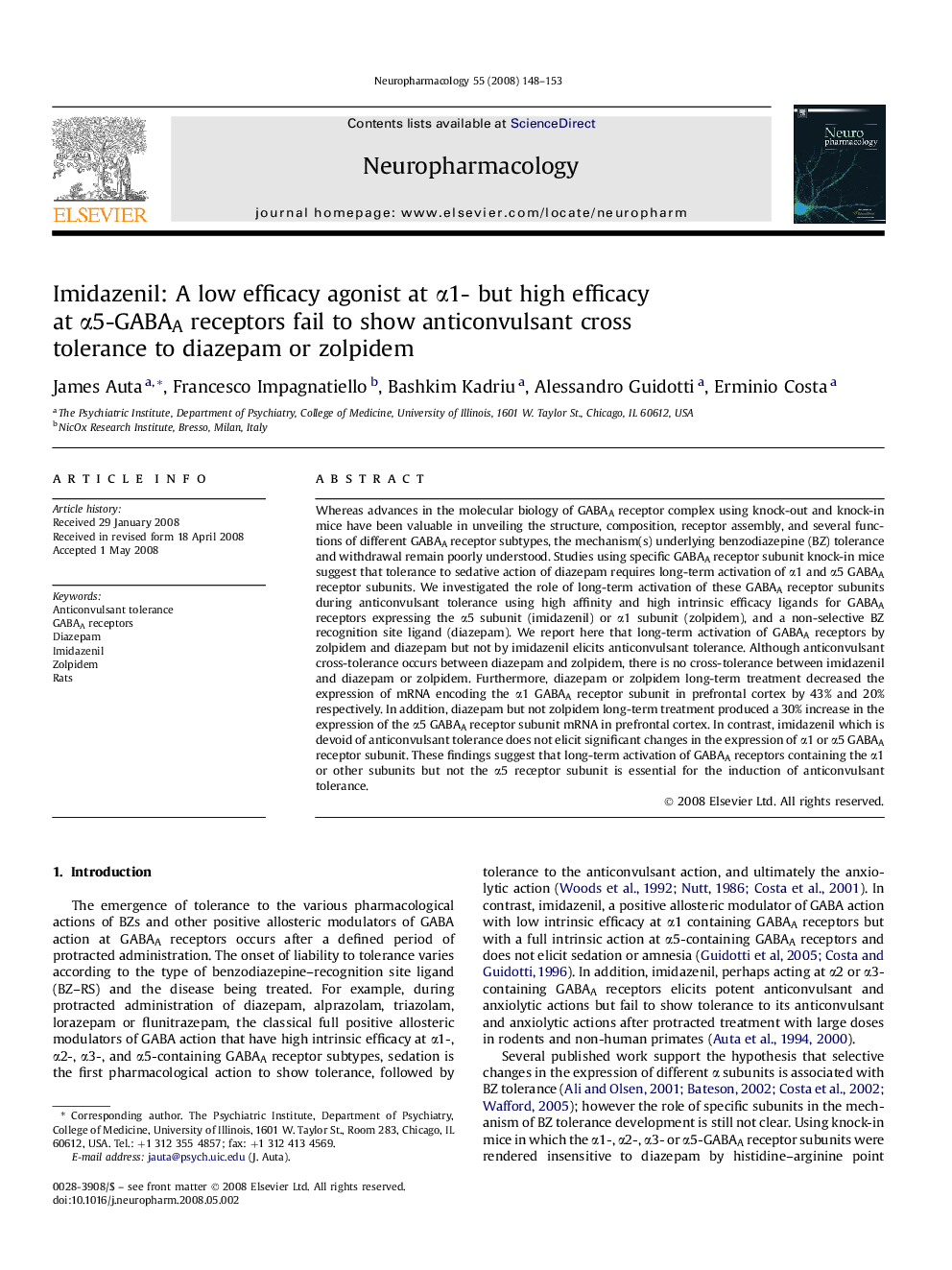| Article ID | Journal | Published Year | Pages | File Type |
|---|---|---|---|---|
| 2494724 | Neuropharmacology | 2008 | 6 Pages |
Whereas advances in the molecular biology of GABAA receptor complex using knock-out and knock-in mice have been valuable in unveiling the structure, composition, receptor assembly, and several functions of different GABAA receptor subtypes, the mechanism(s) underlying benzodiazepine (BZ) tolerance and withdrawal remain poorly understood. Studies using specific GABAA receptor subunit knock-in mice suggest that tolerance to sedative action of diazepam requires long-term activation of α1 and α5 GABAA receptor subunits. We investigated the role of long-term activation of these GABAA receptor subunits during anticonvulsant tolerance using high affinity and high intrinsic efficacy ligands for GABAA receptors expressing the α5 subunit (imidazenil) or α1 subunit (zolpidem), and a non-selective BZ recognition site ligand (diazepam). We report here that long-term activation of GABAA receptors by zolpidem and diazepam but not by imidazenil elicits anticonvulsant tolerance. Although anticonvulsant cross-tolerance occurs between diazepam and zolpidem, there is no cross-tolerance between imidazenil and diazepam or zolpidem. Furthermore, diazepam or zolpidem long-term treatment decreased the expression of mRNA encoding the α1 GABAA receptor subunit in prefrontal cortex by 43% and 20% respectively. In addition, diazepam but not zolpidem long-term treatment produced a 30% increase in the expression of the α5 GABAA receptor subunit mRNA in prefrontal cortex. In contrast, imidazenil which is devoid of anticonvulsant tolerance does not elicit significant changes in the expression of α1 or α5 GABAA receptor subunit. These findings suggest that long-term activation of GABAA receptors containing the α1 or other subunits but not the α5 receptor subunit is essential for the induction of anticonvulsant tolerance.
